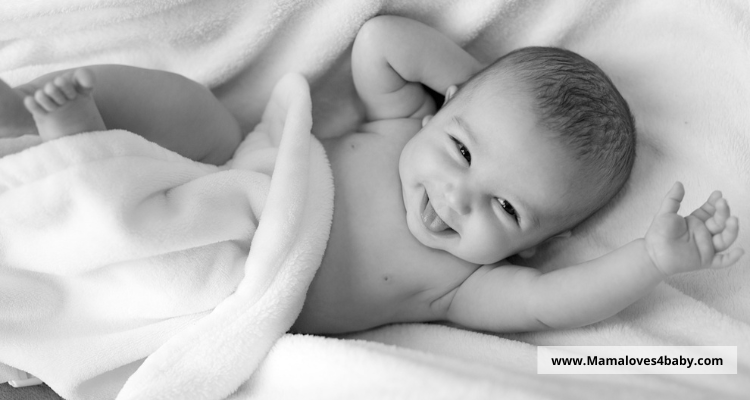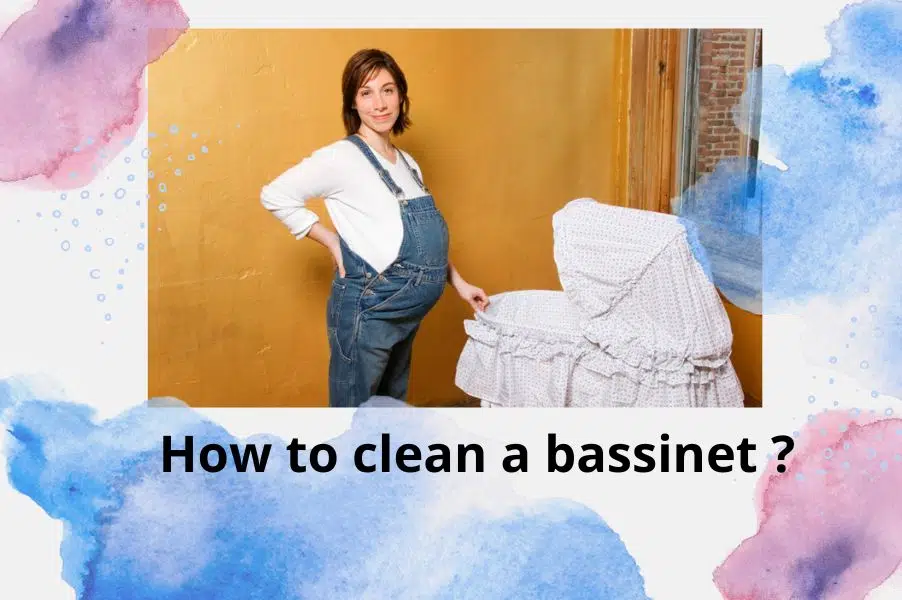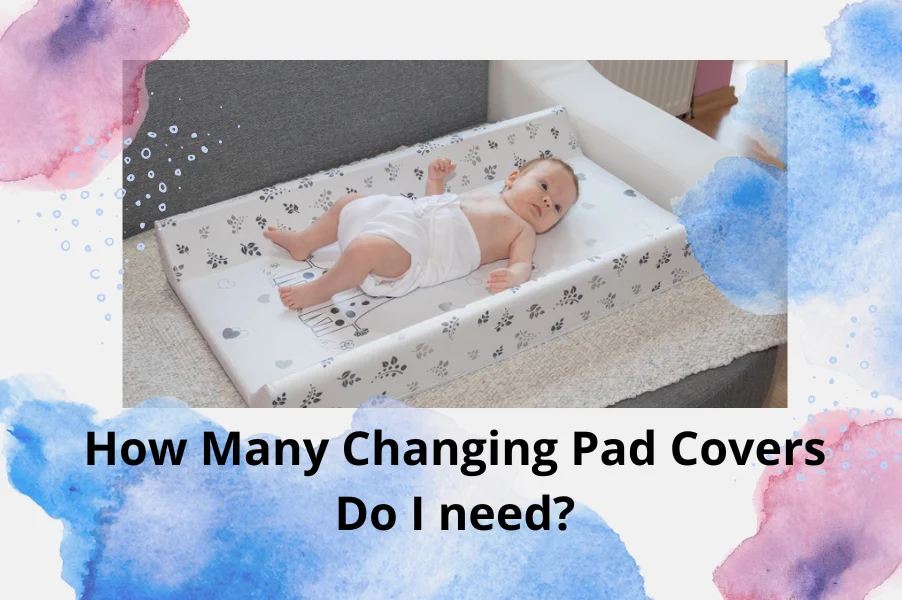If your child is struggling with reflux, an inclined bassinet may be a good option for you. This type of bed can help to reduce the symptoms of reflux, and it can also make nighttime feedings easier.
Do you need an inclined bassinet ?
Bassinets are a great way to soothe your baby with reflux. The best bassinets for babies with reflux offer an incline that elevates your baby’s head and chest, making it easier for them to digest their food and reduce the symptoms of GERD.

Things to Consider before choosing the best bassinet for babies
Do you need an inclined bassinet? An incline bassinet can help to keep your baby’s head elevated, which may help to eliminate acid reflux. These things should be considered when deciding if an incline bassinet suits your baby.
- First, the bassinet should be safe. If there have been some recalls of inclined bassinets in the past, then it is essential to do your research before buying second-hand products.
- Second, you must decide how often you will use the incline feature. If you plan to use it every night, you may want to choose a bassinet that has an incline feature that can be adjusted. This way, you can adjust the angle of the incline as needed.
- Third, consider the cost of an inclined bassinet. They can be more expensive than traditional bassinets, so you must decide if the benefits are worth the price.
- Fourth, you will need to consider the space in your home. You may not have room for an inclined bassinet if you have a small house.
If your baby suffers from GERD (gastroesophageal reflux disease), you may wonder if a bassinet is necessary. After all, GERD is characterized by spitting up or vomiting episodes, and it can be challenging to keep your little one upright after feeding.
The good news is that there are several bassinets for small spaces on the market that are designed specifically for babies with GERD. These bassinets feature an incline, which helps to keep your baby’s head elevated and prevent spitting up.
In addition, many of these bassinets come with a removable insert that can be used for naps or overnight sleep. It gives an extra layer of protection against GERD and can be easily removed when your baby is not using it.
You can check out the options in the above link if you want the best bassinet for a baby with reflux. There is a compiled list of our top picks to find the perfect one for your needs.
Safety standards for incline sleepers to avoid infant deaths
Before you purchase inclined infant sleep products, it’s essential to consider the safety implications of this type of bed. While most incline sleepers are safe for babies, there have been reports of infants rolling out of this bed.
For this reason, choosing an inclined sleeper with a safety strap or harness is essential to keep your baby securely in place. Additionally, you should always place the inclined sleepers on a flat surface, such as the floor, to further reduce the risk of your baby rolling out.
What Makes Inclined baby Sleepers Dangerous?
Inclined sleep products are dangerous for infants because they increase the risk of suffocation. They also increase the risk of Sudden Infant Death Syndrome (SIDS) and other sleep-related causes.
The American Academy of Pediatrics (AAP) does not recommend using inclined sleepers for infants. The AAP has issued a warning about the dangers of these products.
The Consumer Product Safety Commission (CPSC) has also warned about the dangers of inclined sleepers. The CPSC investigates reports of infant deaths and injuries associated with these inclined sleepers.
If you have an inclined sleeper, the AAP and CPSC recommend that you stop using it immediately for baby sleeping.
Sudden infant death syndrome and use of inclined sleepers
SIDS is the sudden, unexplained death of an infant under one year. Many factors can contribute to SIDS. However, the American academy of pediatrics recommends that infants be placed on their backs to sleep. It is the safest position for infants to sleep in.
What are the dangerous infant sleep products?
Some of the most dangerous inclined sleepers are marketed as “miracle” baby gears or solutions. These include cribs that claim to rock your infant to sleep or devices that promise to let your babies sleep through the night. While these products may seem like they offer a quick and easy solution to your baby’s sleep problems, they can be pretty dangerous.
Cribs that claim to rock your baby to sleep can cause your baby to become trapped and suffocate. Devices that promise to help your baby sleep through the night can also be dangerous, as they may prevent your baby from being able to wake up if they start to choke or have another medical emergency.
The best thing is to ensure your baby’s safety during sleep and to create a safe sleep environment. For this, you can follow the American Academy of Pediatrics recommendations.
Some other dangerous infant sleep products that should not be included in the baby registry items list for sleeping babies include:
- Sleep positioners
- Crib bumpers
- Pillows or blankets in the crib
- Stuffed toys in the crib
- Loose/soft bedding
- Water beds
- Air mattresses
- Sofas or armchairs
These products can severely risk your child’s health while falling asleep. Sleep positioners, for example, can cause your baby to become trapped and suffocate while in an inclined sleeping position. Crib bumpers can also be dangerous, as they can prevent your baby from being able to move around freely. Furthermore, crib bumpers could also lead babies to get stuck in between the crib slats and can be the cause of infant deaths.
Pillows and blankets in the crib can also be a suffocation hazard, and loose bedding can cause your baby to become tangled and unable to breathe. Water beds and air mattresses are also not safe for infants, as they can lead to drowning. Sofas and armchairs are also not safe to sleep spaces for young infants, as they can cause your baby to become trapped and suffocate.
Flat and firm surfaces, like a bassinet or bare crib with a safe crib mattress, are ideal for your baby. And the safest sleep solution is to place them on their back in bed sleepers so the chin to chest position is clear.
Remove all pillows, blankets, toys, and loose bedding from the sleeping area.
You should also avoid placing your infant to sleep on sofas, armchairs, water beds, air mattresses, or any other soft surface. If you use a blanket, ensure it is lightweight and cannot be pulled over your infant’s head.
Medical sciences recommend sharing a room with your baby for at least the first six months of life, as this can reduce the risk of SIDS by up to 50%.
What are the types of inclined sleepers?
There are a few different types of inclined infant sleepers. Some standard options include inclined bassinets, co-sleepers, and swings. Additionally, there are a few less common options, such as inclined cribs and cradles.
Unlike inclined bassinets, the other options of inclined baby sleepers are more likely to cause SIDS. According to research, you should avoid using an inclined position with infants younger than six months old due to the risk of suffocation. So, which one should you choose? That depends on your preference and what will work best for your home environment.
But the incline angle of the bassinet must not be more than 10 degrees. Or otherwise, you can use safety straps or harnesses on an inclined baby sleeper if you want to set an inclined position of up to 30 degrees.
Benefits of inclined bassinets for reflux relief
- Several benefits come with using an inclined sleeper for a baby with reflux. Firstly, this type of bed can help to reduce the symptoms of acid reflux, which can be extremely painful for infants.
- They are specifically designed to elevate your child’s head and torso, which can help reduce the amount of stomach acid that flows back into the esophagus.
- They keep your baby in a semi-inclined position that should not block the baby’s airway. It can help prevent GERD symptoms from occurring in the first place.
- Additionally, incline sleepers often come equipped with features that can help to soothe and calm babies, such as vibration, sounds, and soft lighting. It can be a blessing for exhausted parents trying to get their baby to sleep through the night!
- You can feed your baby comfortably without worrying about holding them upright or propping them up with pillows to get an inclined sleep surface.
- You can get some much-needed rest since you won’t have to hold or rock your baby constantly.
- Depending on your preferences, it can be used as a standalone bassinet or placed inside a baby bed.
- It is easy to set up and take down, so you can take it with you when you travel for your baby’s safe sleep.
- It is relatively inexpensive, especially when compared to other baby registry items.
- Most importantly, it can give your baby the relief they need from GERD symptoms so that everyone can get a good night’s sleep.
Conclusion: Do you need an inclined bassinet
While an inclined bassinet can help your baby sleep better, it is unnecessary for all parents. If you have a fussy baby who does not want to sleep, consider trying out an inclined bassinet or other sleep aids before giving up hope. Many options are available to fit any budget, so research what works best for you and your family. Have you tried an inclined bassinet? What tips for getting your baby to sleep through the night?


